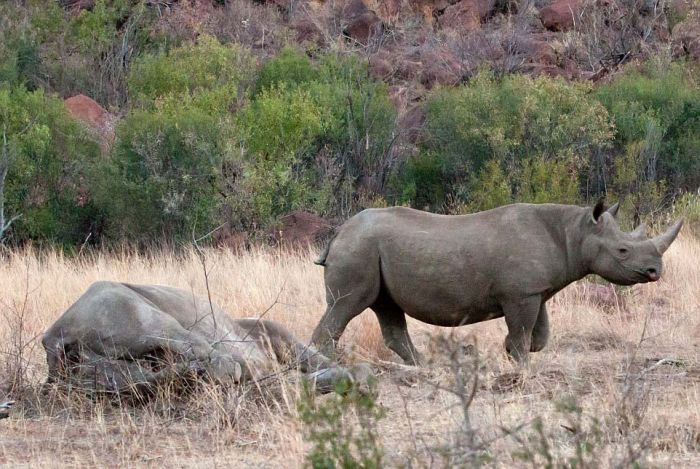|
|
Black Rhinoceros Against A Furious Elephant
|
Typically a mature Sumatran rhino stands about 130 cm (51 in) high at the shoulder, a body length of 240–315 cm (94–124 in) and weighs around 700 kg (1,500 lb), though the largest individuals have been known to weigh as much as 1,000 kilograms. Like the African species, it has two horns; the largest is the front (25–79 cm) and the smaller being the second, which is usually less than 10 cm long. The males have much larger horns than the females. Hair can range from dense (the densest hair in young calves) to scarce. The color of these rhinos is reddish brown. The body is short and has stubby legs. They also have a prehensile lip.
Evolution
Rhinocerotoids diverged from other perissodactyls by the early Eocene. Fossils of Hyrachyus eximus found in North America date to this period. This small hornless ancestor resembled a tapir or small horse more than a rhino. Three families, sometimes grouped together as the superfamily Rhinocerotoidea, evolved in the late Eocene: Hyracodontidae, Amynodontidae and Rhinocerotidae.
|
|









